Most women dream about their wedding since their teen age, imagine how things would be and often incline to some truly romantic, movie-like ideas. I was lucky enough to get mine fulfilled in Peru, by the Pacific, on the day of the first day of autumn.
You might think Peru is not a traditional beach wedding destination; those would rather be Mauritius, The Bahamas, Maldives, Bali, Hawaii, Santorini or one of the renowned Thai islands. Yet, since I met the man of my life here and have been living here for more than two years by now, the choice was clear. We both knew we wanted a chamber-like, unknown beach wedding for the closest family and friends, i.e. max 20 people. My family could not arrive due to various health reasons which prevent them for taking such long flight from Europe, which was the only sad bit about the wedding. This fact was rather different from my teenage idea of a huge party-like wedding attended by hundreds… Well, even dreams have their development.
Check out our beach wedding video.
Types of Wedding in Peru and Requirements for Foreigners
Peru currently recognizes only two types of weddings: civil (at the municipality seat or at another place approved by the municipality) and religious (i.e. Catholic, which, in addition to the church institution must also be granted by the municipality). Ritual weddings (with shamanic legacy or Inca legacy etc.) are currently not recognized. To have a wedding of that kind that would be officially valid, one needs to have a civil wedding, followed then by a ritual ceremony (most commonly in the Sacred Valley or in the jungle) of sandalwood cleansing and ocean blessings.
The Municipality of Nuevo Chimbote where we live agreed to grant us civil wedding which was followed by a ritual. The payment for the municipality for their assistance was about 170 soles, plus 250 soles because I am a foreigner (a special fee for any other than nationality than Peruvian applies), plus 160 soles that the representatives of the municipality agreed to assist to the wedding not at the town hall but at a local beach of our choice. Every municipality in Peru has its own conditions and fees for the to-be-married.

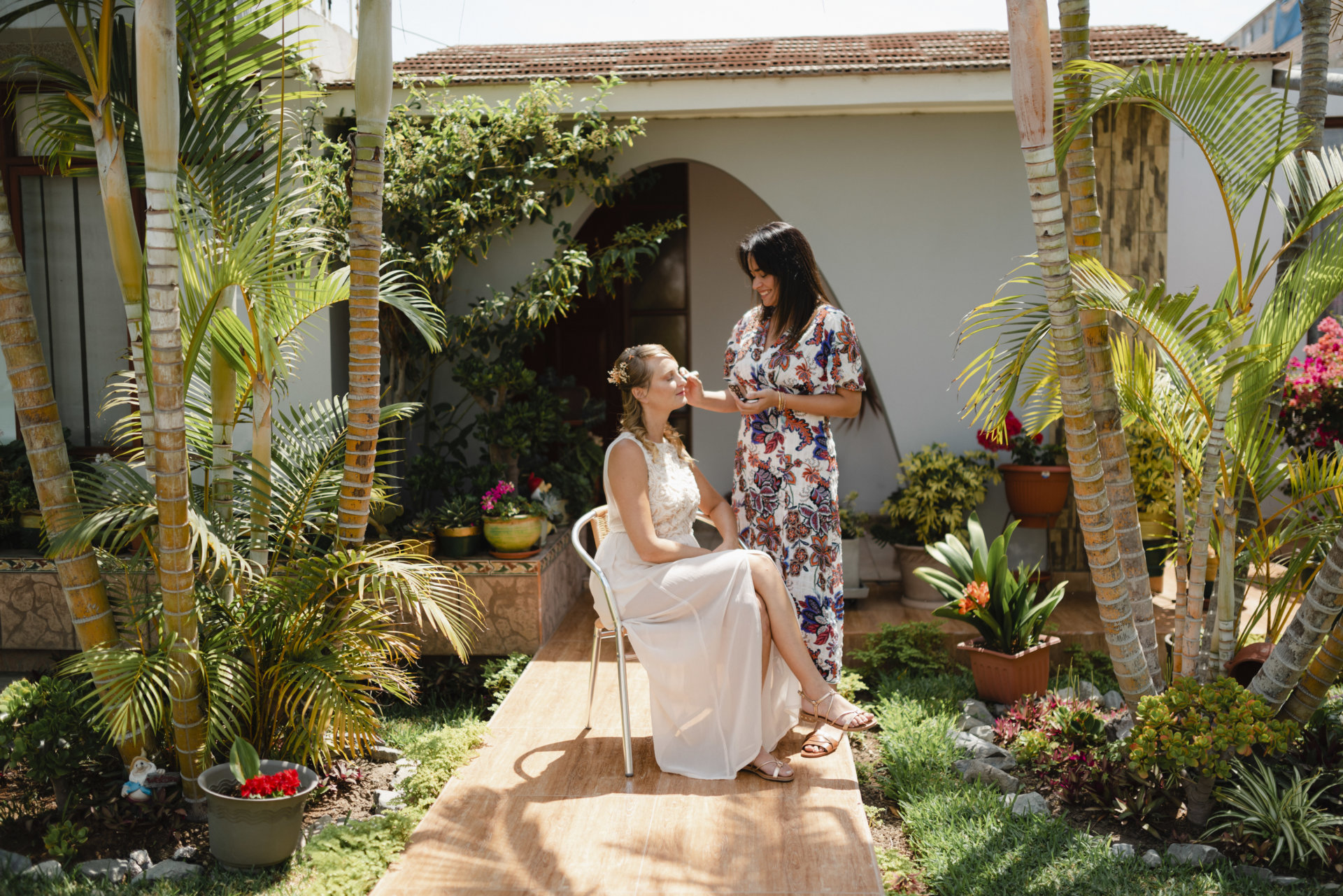



They, however, generally agreed on two requirements for foreigners which one needs to sort out in their native country (personally or in the representation of one who has an officially certified legal power / power of attorney) and these are: the birth certificate and the certificate of legal capacity to marry. Both of these documents must carry the stamps of all higher registry institutions and must be provided with an apostille of the Ministry of Foreign Affairs of the home country. Subsequently, they have to be translated by a judicial translator, who will then provide the entire document with another stamp.
It is important to know that the issued originals cannot be stamped, all the stamps are placed on the certified copies of the documents!
I had to pay about 160 euros to the Czech Republic for these two documents with all the auspices, but the prices may vary depending on the country, the rates of the translators, etc.
The documents can be brought to Peru by a close person or they can be sent (for a very high fee which applies to documentation). The fee for sending from the EU countries is approximately 100 euros.
Different and Sometimes Shocking Customs
In Peru, the wedding announcement equals to a wedding invitation! Yes, even when you just announce on your social networks, there might be some people asking you if they can come along bringing a friend! If you are unaware of this fact and send your announcement via messengers etc., even worse. You will have a hell of a time explaining to your acquaintances that you did not actually invite them to your wedding but just announced it…

“Hora Peruana” is a term widely used in Peru representing clearly the fact that one hour of a delay is no big deal here. I had to start putting on the leaflets of my yoga classes along with the hour of the beginning of the class an “hora europeana” right after. If you truly want to make sure your Peruvian guests (and the professionals you contracted) do not arrive late to the wedding, make sure to send them a special notice beforehand, asking them to arrive 15 minutes earlier.
There are no wedding gifts! I always found bizarre the Anglo-Saxon custom of sending to those invited to your wedding the name and address of the store where they can get your wedding gifts, but the other extreme is Peru with having “no gifts” custom… (And also no birthday gifts usually and in some families even no Christmas gifts when it comes to adults.).
Even though nobody is familiar with the Central European custom of the newlyweds feeding one another (at least the starter, which in the Czech Republic is soup usually) during the wedding reception, or having to clean up together the shards of a glass broken intentionally by the staff of the restaurant after the welcome drink, some Peruvians are acquainted with the tradition of the wedding vows, wedding cake cutting, the garter auction and the throwing of the wedding bouquet.

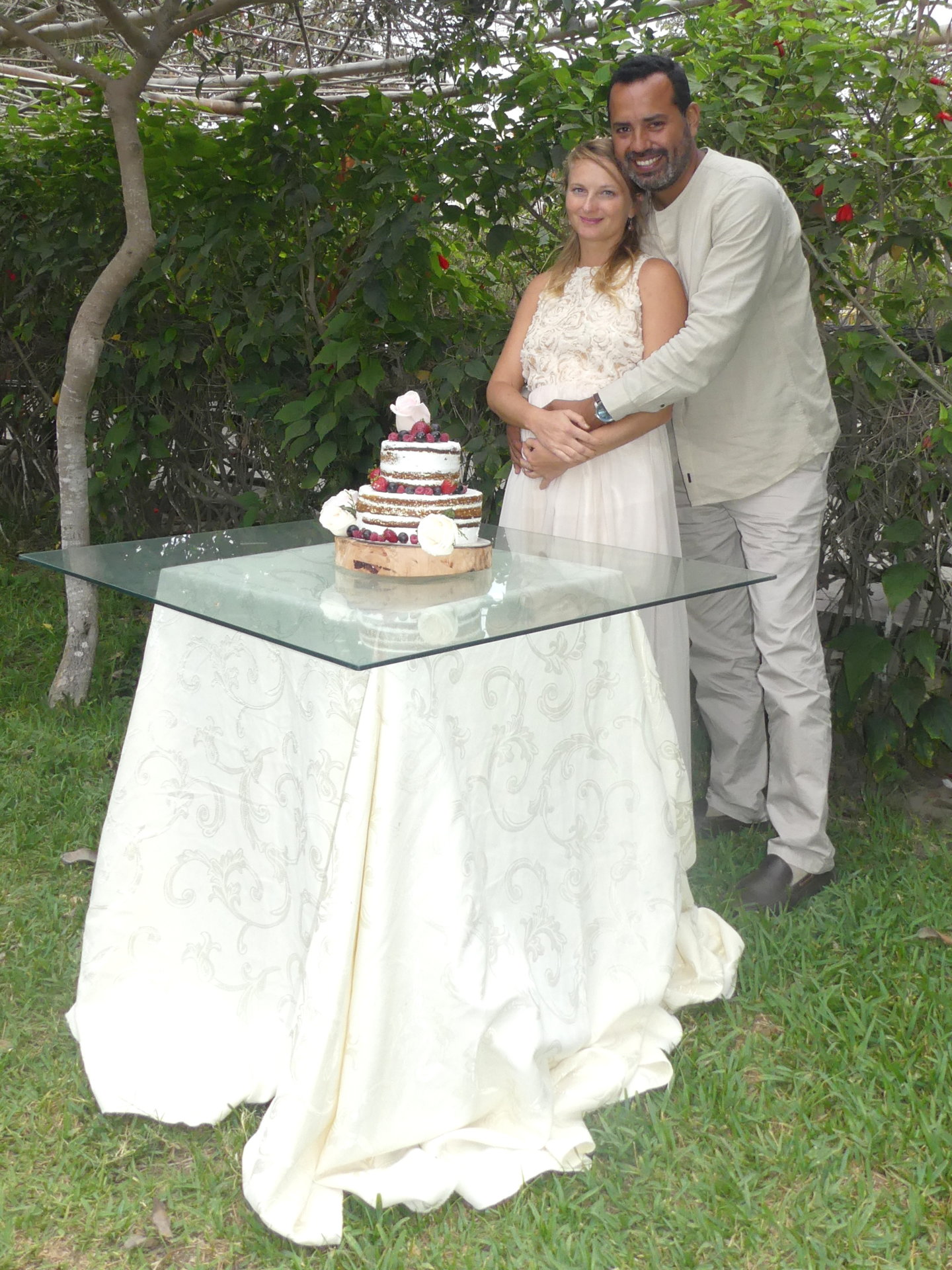

Generally, there are, however, no special traditions held at Peruvian civil weddings – or during the reception: people just like to eat well, drink quite a lot and dance to a live band music which necessarily needs to include some cumbia too. The reception usually begins with the first dance, which is followed by a toast pronounced by the family members. Hors d’oeuvres are usually circulated, along with champagne and the banqueting table is weighted down by various delicacies. There will most likely be an open bar with a wide variety of drinks, a lunch or dinner buffet, and a dessert table.
One of the Peruvian wedding traditions that is becoming quite common is la hora loca (the crazy hour). Once the guests are well fed, have been drinking and dancing for hours, and the reception seems to be coming to an end, la hora loca begins, which is a thematic hour-long celebration with professional dancers and animators. The themes are endless and can range from the Soccer World Cup to Dragon Ball Z. Many multicultural weddings, where the bride or groom is from a foreign country, tend to have a more traditional hora loca, with Andean or Amazonian themes.
Another tradition that some families hold is the cake pull (cintas de la torta) when an inexpensive ring or a charm is tied to a ribbon and attached to the base of the wedding cake. Before the cake is cut, single female guests come up and pull the ribbon. The lucky lady that obtains the ring is (hypothetically) the next one to get married.
Weddings in the communities in the mountains etc. are typically colourful, with the couple wearing traditional, hand-crafted costumes which consist in many layers. The men often wear ponchos and sandals. Both the groom and the bride have a hat.
Every wedding has its own dress code. Most commonly, it is formal, but there could be exceptions.




It is nothing uncommon for the wedding guests to drive themselves home in their cars after the reception, when they have had plenty to drink…
The engagement party, known as la pedida, is less and less common these days. Traditionally, the groom asks the bride’s parents permission to marry their daughter which is followed by an intimate dinner with their parents and close family members to share the big news. Most couples nowadays don’t follow this tradition.
Bachelorette and Bachelor Party are quite common. The bride and the groom would each invite their friends to a night out, which usually involves quite a lot of drinking and dancing. Sometimes, they might each rent an event place and arrange catering and a live band. What IS DIFFERENT is that by no means the bride or the groom spend the night going to a strip bar or a similar place, unlike the Anglo-Saxon nowadays traditions. Spa weekends and similar are also rare.
My husband´s bachelor party was a BBQ (which Peruvians love) with his friends in a friend´s garden. Mine was a clean-up of the beach (the venue of the wedding ceremony) followed by a beach chill with beers and ice creams.

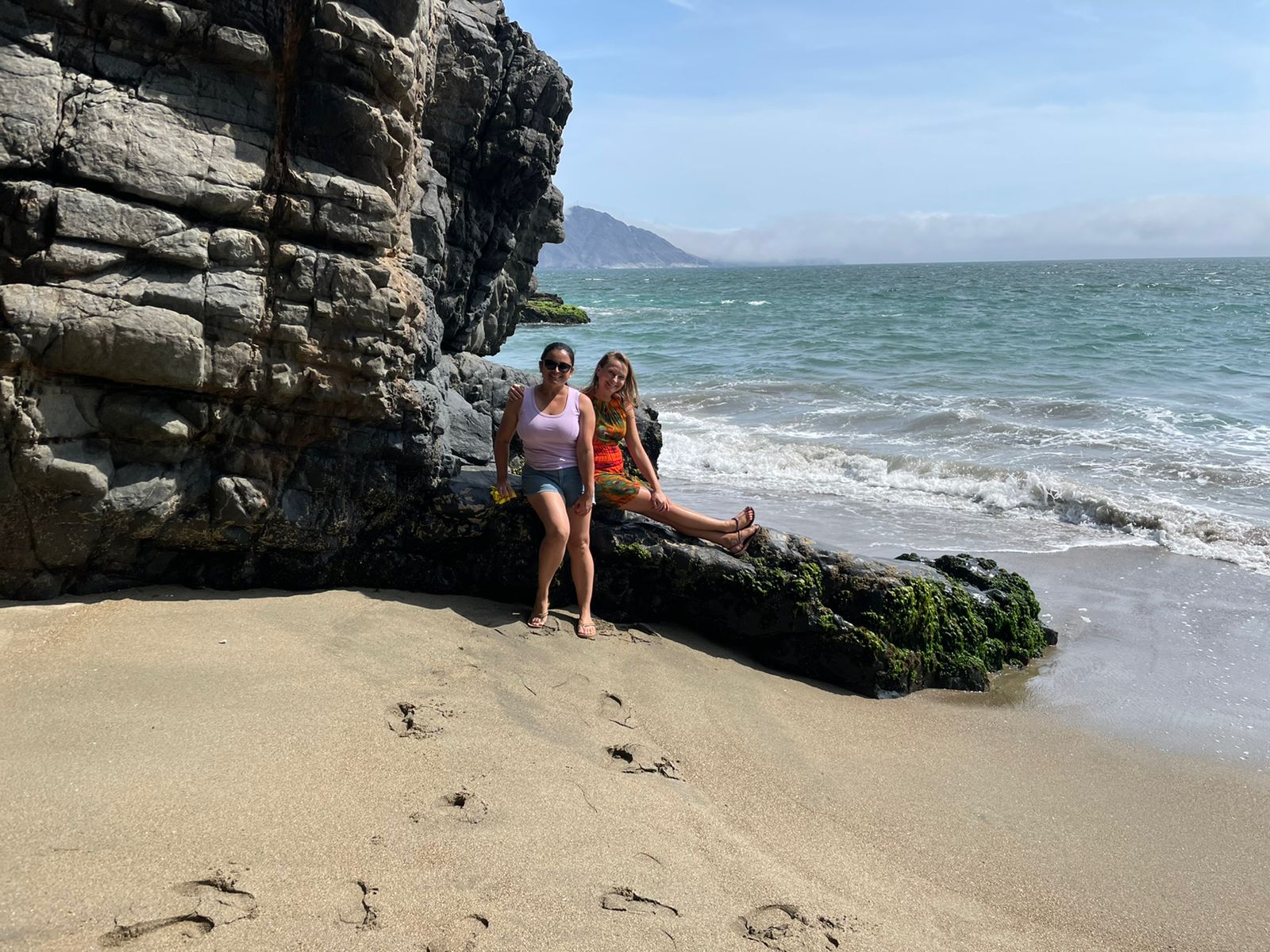

What Needs to Be Arranged – Wedding Budget
If you think that wedding in Peru is anything cheap, forget that idea!
As I love crafts, DIY etc., I decided to make some things myself, such as my wedding bouquet (which cost me about 20 soles and which is worth about 250 soles from a florist) or the floral decorations for the banqueting table at the reception.



My witness was also helping me the day before the wedding to prepare the bags with rice (even in Peru the guests throw rice at the newlyweds to assure abundance for them) and home-made cereal heart-shaped biscuits for each guest as a little “thank you for your attendance” gift which I wanted to prepare as a substitute for the Czech Republic “výslužka”, a box filled with cakes and pies of various types which the wedding guests receive at the end of the day.
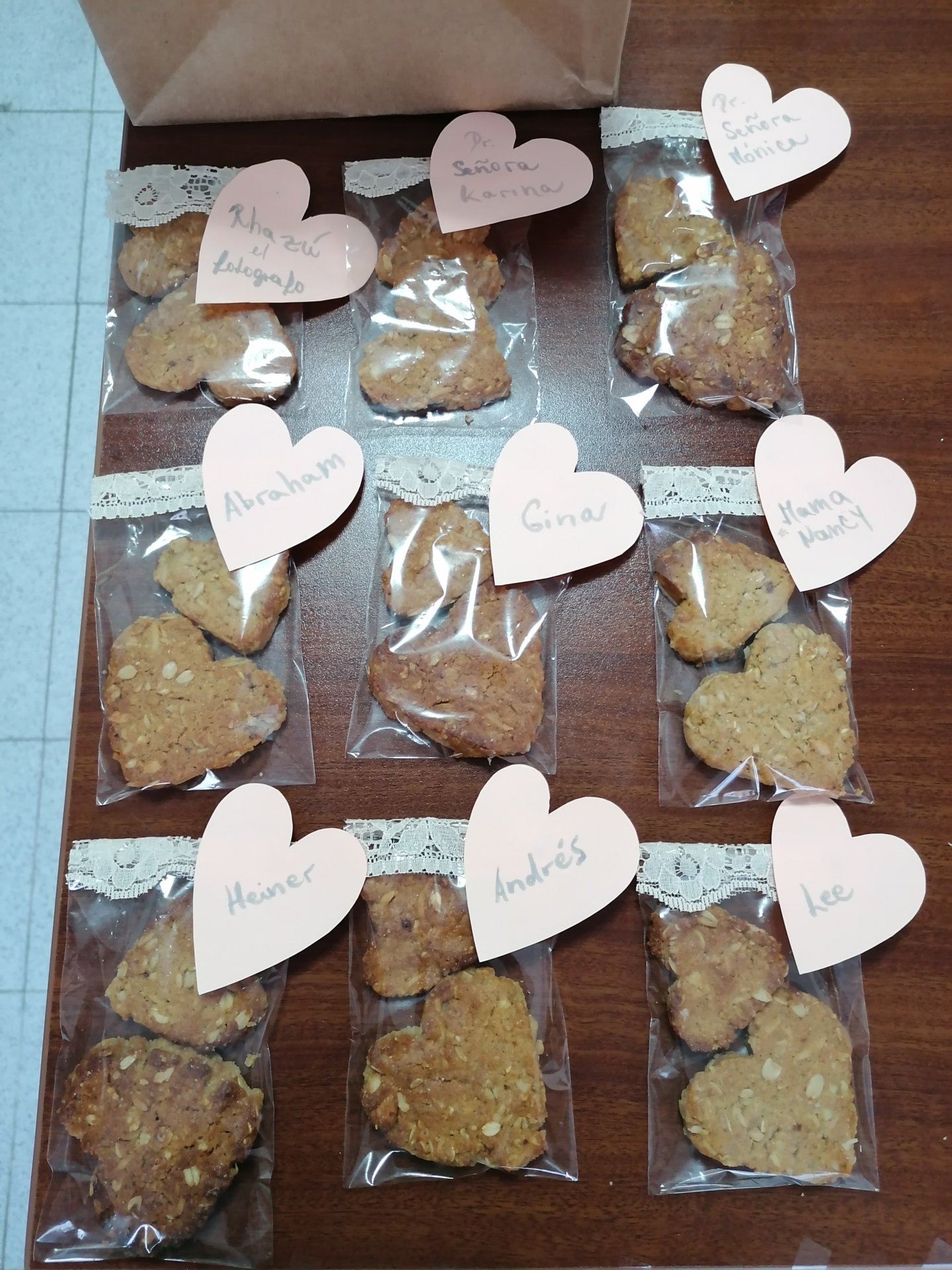

Probably the most difficult bit when it comes to arranging our wedding was to get an “a cappella” choir assembled to sing at the entrance of the groom, the entrance of the bride, and at the end of the ceremony. Eventually, I resigned and hired a band called One Nite – Diversión Asegurada – which agreed to do the three songs chosen by me only with an acoustic organ, one lead singer (Fernanda Alfaro Alvarez) and two vocals. To find someone who would be willing to sing completely without musical instruments was impossible!
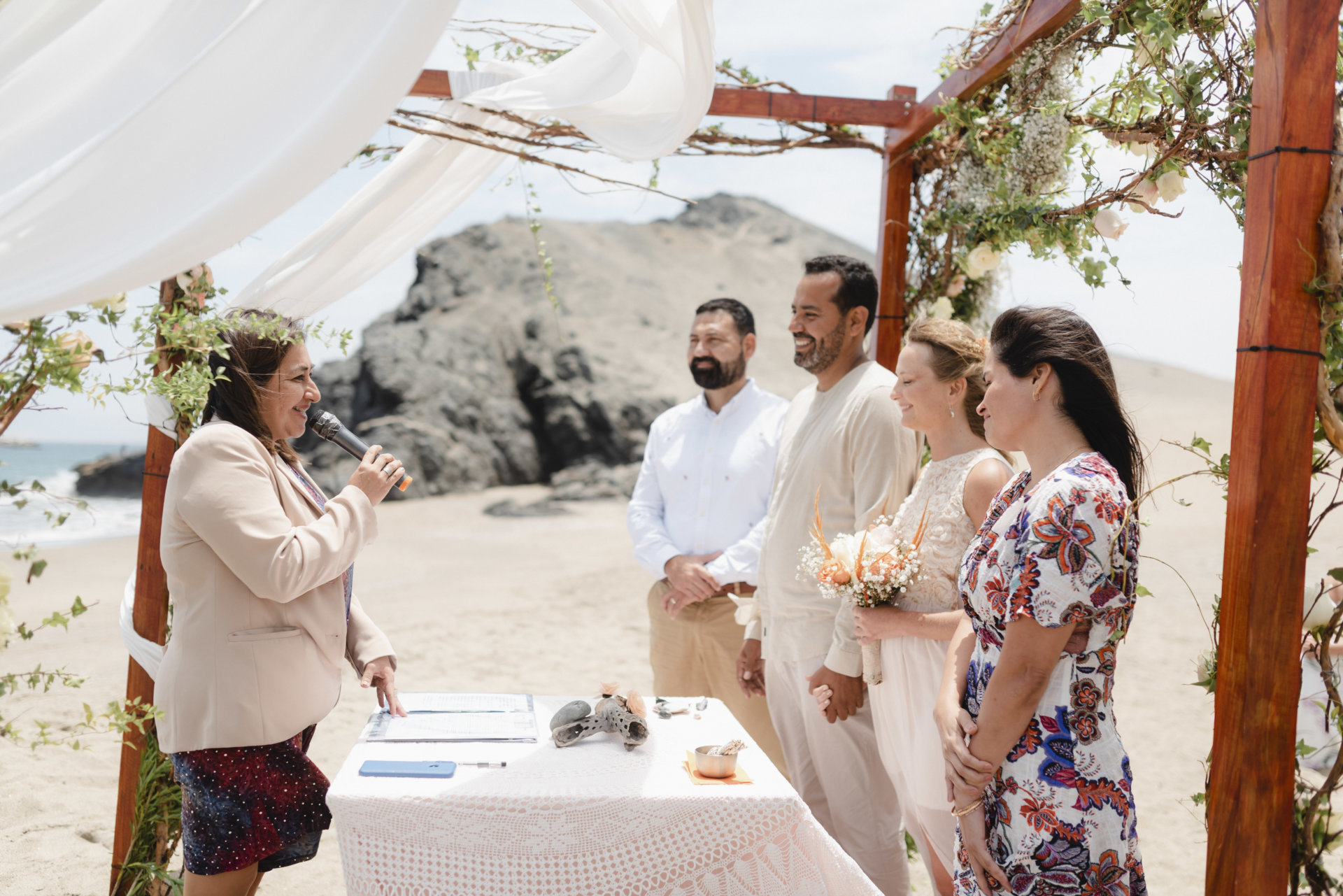





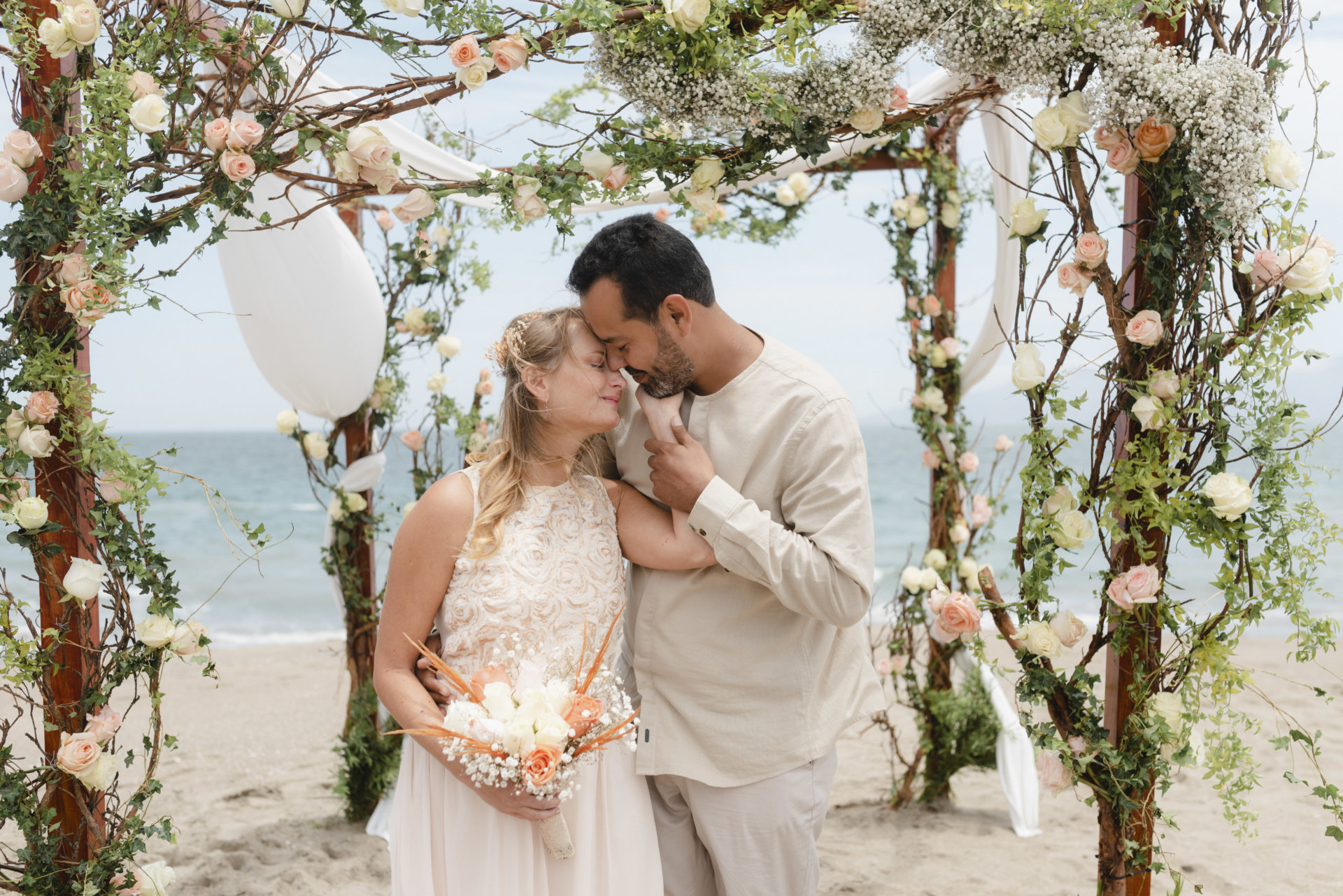

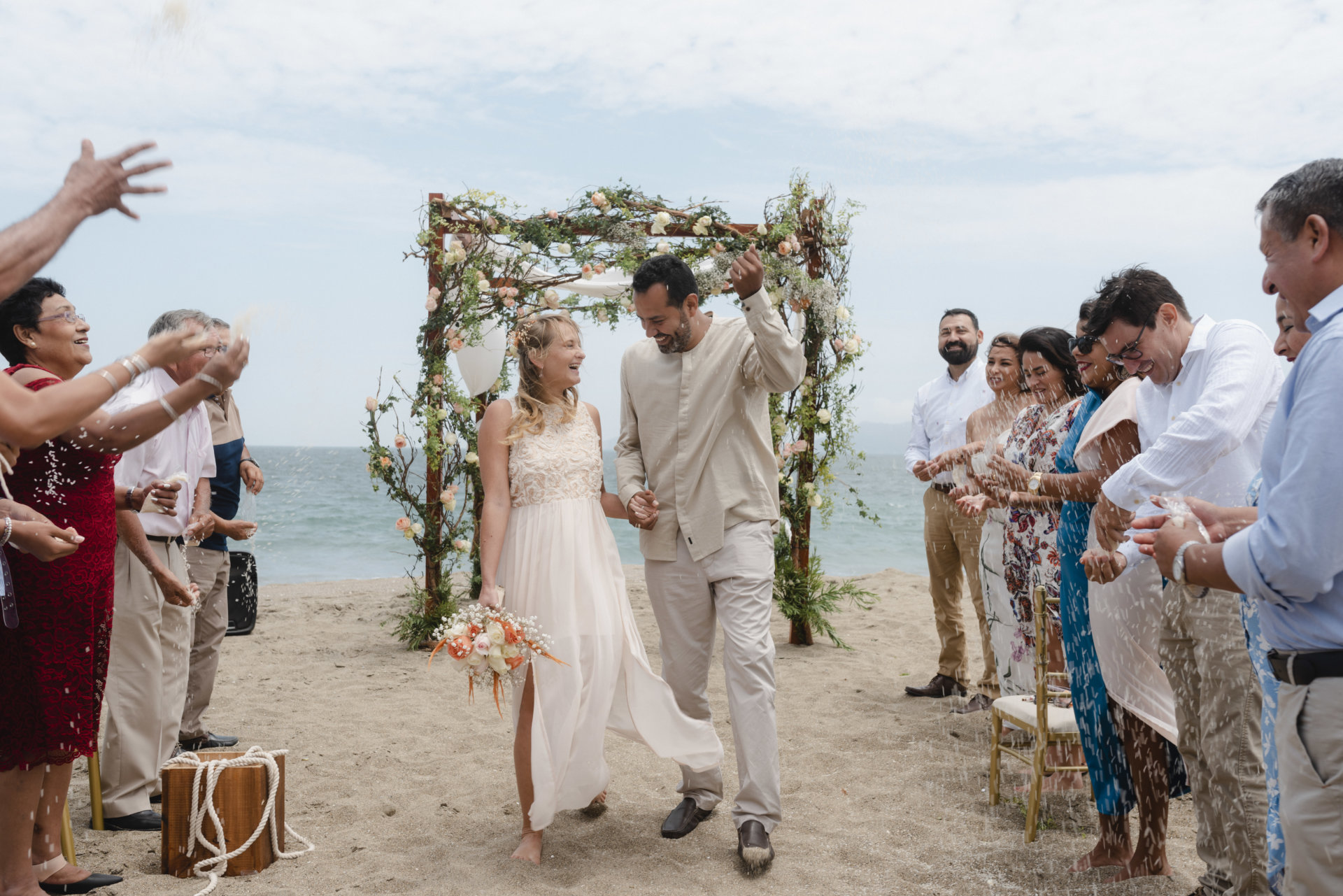

The civil, yet ritual wedding by the Pacific, was assisted by the Municipality of Nuevo Chimbote represented by Mrs Mónica Quevedo. The official wedding photographer who took pictures during the ceremony and the next day at the photo session was Rhazú Vásquez. Our wedding agent who dealt with all the beach decoration (wedding arch, table, chairs, and decorative details along the aisle) was Karen Cicchini. They have all done a great job. Our reception took place at El Huerto Country Club where you typically arrange an open bar for the guests, a lunch and/or a dinner. Our wedding cake was made of 100% organic healthy ingredients by Lucía Montalvo.
Now, as for the budget, you need to have in mind:
- Big affairs tend to come at a big price, so it is important to have a clear idea of how much you are looking to spend and how many guests you wish to invite. A typical Peruvian wedding would count all the family members, meaning all the uncles, aunts, cousins etc. too, as well as closer friends. In our case, we counted a little less than 300 guests (normal in Peru) to be invited and naturally opted for a chamber-like wedding as none of us is a huge fan of massive, show off, party events.
- Most couples hire an event place for the reception with full catering and an open bar, they pay for the floral decorations, the venue decorations (which might include anything the event place does not offer, such as furniture, table cloths, cutlery etc.), a live band and sometimes even animators for “la hora loca” (see above). The wedding cake needs to be ordered separately and starts usually at 150 soles for a size for 10 people.
- The wedding venue usually takes a big chunk of the budget. Some country clubs and hotels offer wedding packages which include the catering and event planning service, so this might be a good option for those looking to save a little money.
- The photographers (starting at 500 soles for just the time of the ceremony, not for the reception, neither for the photo session; this includes no video making, just digital photos), bands (for every hour and a half each member charges about 150 soles), wedding agents (starting at 1000 soles if you just pay for the arch, table and chairs rental for the 20 minutes of the ceremony), and la hora loca animators are pricy as well (for the hour of work, each member of the team charges about 200 soles).
- Unless all your guests have a car, you have to arrange (and pay) a taxi for them! The Czech habit of asking those guests who have a car to bring those guests who don’t have a car along to the wedding is generally not common here. We were lucky enough that our friends did help out even without asking, but for example all the family members of my husband who decided to come to our town by bus, not by car, had to be arranged a taxi for. The taxi also has to be arranged for the choir, the photographer, the municipality representatives etc.
- A huge part of the budget nowadays goes into the wedding rings… When thinking about the symbolism of our wedding rings which were made by wonderful Czech jeweller Miroslav Lörincz, we have decided to have a triangle engraved into them, as a symbol of enlightenment, revelation, and a higher perspective, and implement genuine sand into them as an element of eternity as well as transiency on the never-ending spiral of existence, which always leads to evolution. The rings fit better our middle finger rather than the ring finger, reminding us thus that rather than the common misconception that the ring finger has a vein running directly to the heart we should know better and “live the truth” – as the vein actually is on the middle finger, which in Spanish is adequately called “the heart finger” (dedo corazón).
- What does not interfere much with the budget, as opposed to Central Europe or the US, is the hairdresser and the make-up artist (I paid 110 soles for both and that included their coming to the house of my witness where I was sleeping the night before the wedding – so, full comfort). The wedding clothes, if you have it made by a local tailor, also can be obtained for a very fair price.

Since pension is not commonly introduced for the retired (only for those who worked for the state or for some well-established company for certain amount of years), unlike in the countries of Central Europe, it is the couple – NOT THEIR PARENTS – who cover all the expenses of the wedding.
Small weddings can cost approx. $3,500 to $7,000, while bigger weddings can cost double or triple, depending on the location and the exclusivity of the affair.
Post-Wedding Fun with Bureaucracy
After the wedding ceremony, the couple is given a commemorative wedding diploma as well as the wedding certificate. However, in our case, things got complicated: my surname includes a letter with diacritics (ž) that are not known in Spanish and the Peruvian computer system does not accept such letter while the Czech registry office system requires all diacritics to be used on the documents. So, though happily married, a week after, we still do not have our wedding certificate… Hail to the bureaucratic systems of the world!
Remember, if you are a foreigner getting married in Peru and you want your wedding certificate to be valid in your country of origin too, you have to have it officially certified and subsequently apostilled at the Ministry of Foreign Affairs in Lima. In your native country, you will have to have it translated by a judicial translator and approved at the highest registry office. Only then you are officially married in your native country too!
As for the wife´s surname in Peru, you only have two options: either you keep your original surname, or you keep your original surname and add “de” and the first surname (in the line of the father) of your husband. These changes only apply to those who have a Peruvian residency and DNI (ID document). If you got married “on your passport”, the surname changes can only be carried out in your native country, according to the local rules there.










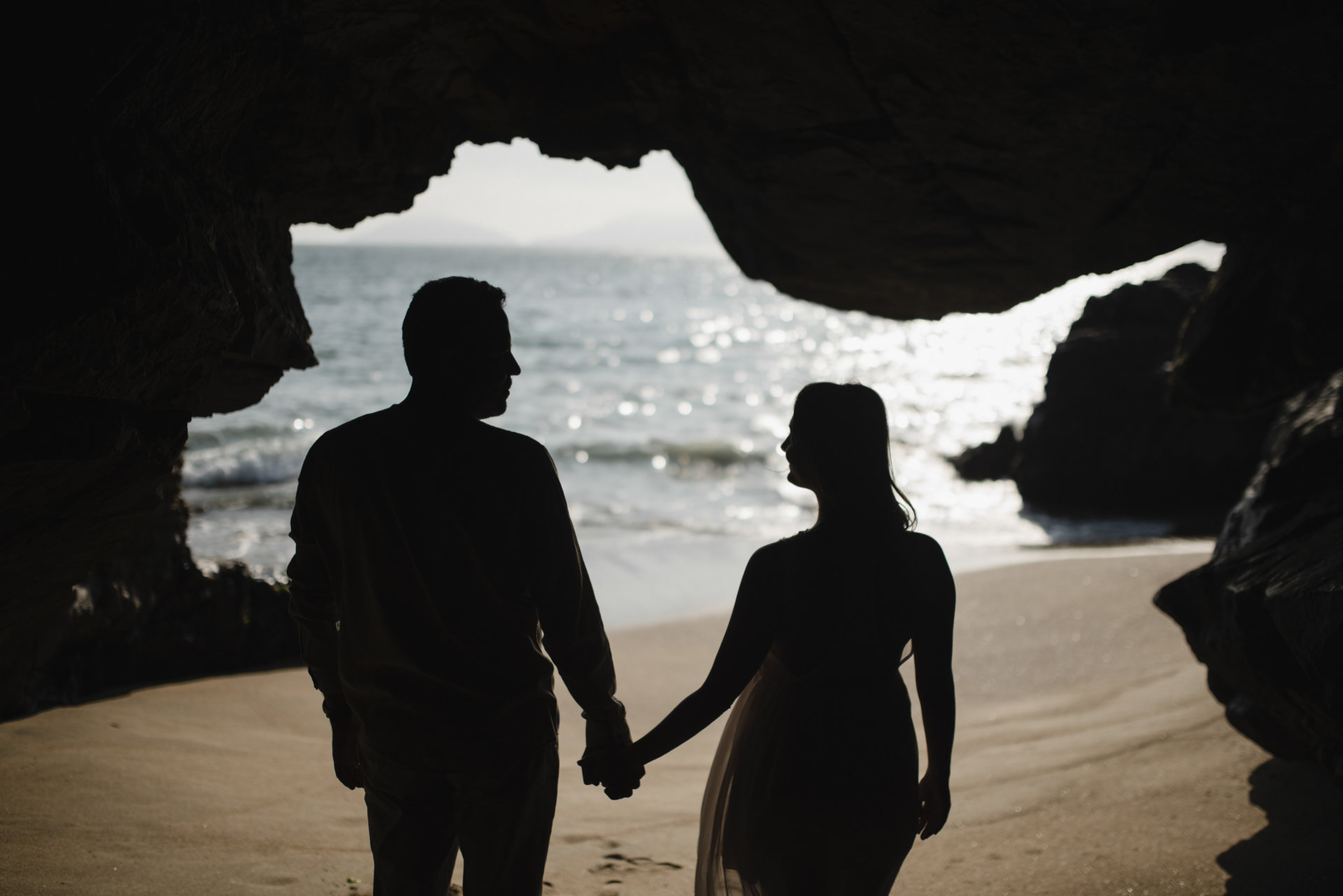







Congratulations Martina, lovely video and photos of the wedding.
Congratulations. Well informative. All the best
Like a dream come true – beach wedding is the best.